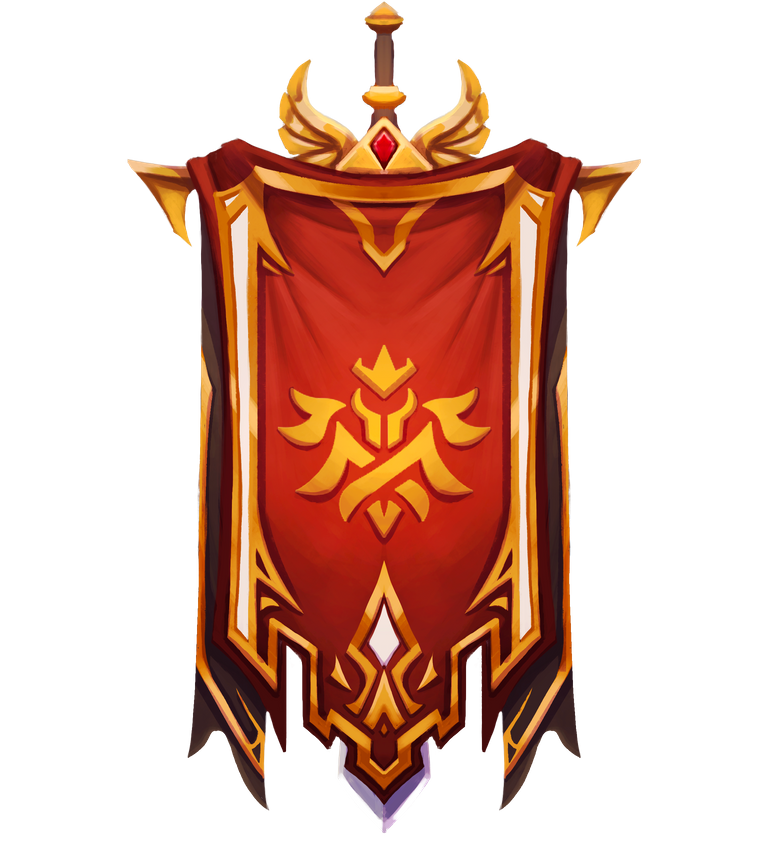Splinters of Praetoria -Ferexian Empire


Welcome to the immersive lore of the Splinterlands. In this series of articles, we present a comprehensive exploration of the major splinters of Praetoria. Each week, you’ll learn about a new splinter: its governance, economy, races, religions, culture, and more. Gain a deeper understanding of the Splinterlands and the splinters that shape it so the next time you see Eternan Brune or an Imperial Knight on the battlefield, you’ll know exactly what you’re up against.
Visit SplinterLore for a complete list of the major splinters, both published and yet to be released!


Ferexian Empire
"Unity, power, control."
Overview
The imposing Ferexian Empire is an oligarchy that originated from the continent of the Burning Lands. Following the collapse of the Wizards' Veil, the empire expanded its reach into Praetoria. Its territory now covers a substantial portion of the eastern half of the Great Lowlands, and it continues to push its boundaries westward. Nestled within the Daigenloft Mountains, the fortress city of Miterstedt serves as the empire's capital.
Governance
The Ferexian Empire is under the iron grip of the Ministry of Peace, a military junta led by the High Warlord, which exerts total control over all aspects of social and political life. Military justices preside over tribunals, serving as both judge and jury. Crime is severely punished, with death and indentured servitude being the standard penalties for most offenses.
The Ferexian military is organized as follows:
- Generals lead corps of 2 to 4 brigades, or 3,842 to 7,684 soldiers.
- Colonels lead brigades of 3 battalions, or 1,920 soldiers.
- Majors lead battalions of 3 companies, or 639 soldiers.
- Captains lead companies of 4 platoons, or 212 soldiers.
- Lieutenants lead platoons of 4 squads, or 52 soldiers.
- Sergeants lead squads of 3 teams, or 12 soldiers.
- Corporals lead teams of 3 privates.
- Privates are the foot soldiers who form the backbone of the army.
Additionally, the empire has established two military academies in Praetoria: East Point, located on the easternmost edge of the Daigenloft Mountains, and Strandhurst, located on the shores of the Great Plains. Enrollment in either academy is highly competitive, as graduates receive a higher station in the empire’s caste structure relative to their peers.
Economy
The economy of the Ferexian Empire is highly regulated and rigidly controlled. Central to its health and prosperity is the exploitation of the empire’s stratified workforce, with each caste contributing specific skills and labor, all under the ever-watchful eye of the Ministry of Peace.
Mining in the perilous terrain of the Daigenloft Mountains is a major source of the empire's wealth—particularly the extraction of iron and precious minerals. These materials fuel the military-industrial complex, with skilled blacksmiths and artisans toiling to craft a steady supply of weapons and armor.
In the fertile Great Plains, large tracts of land are devoted to the cultivation of crops such as wheat and barley. Farmers, almost exclusively from the lower castes, work these lands to ensure the empire's granaries are never empty and a constant food supply is available to fuel both its citizens and its military campaigns.
Fishing is another crucial element of the economy, particularly in the coastal regions, where an armada of vessels sets sail and returns each day from the Splinter Sea, their nets heavy with fish. These catches not only provide sustenance, but also contribute to the production of oils and other commodities.
The Ferexian Empire is also a powerhouse in the application and exploitation of arcane sciences. The Ministry of Peace closely controls the use and development of magic, and innovations are primarily geared toward harnessing it for surveillance, control, and war.
Thus, the empire's economy thrives not through innovation and entrepreneurship, but rather through the tireless labor of the lower castes, the ruthless exploitation of resources, and the strict application of control and domination. The fruits of the citizenry's labors flow upward, filling the coffers of the ruling class and perpetuating the cycle of wealth and power in favor of the Ministry of Peace.
Demographics
Races
The citizenry of the Ferexian Empire is an eclectic mix that comprises:
- Burnlander humans
- Redhair minotaurs
- Crimson orcs
- Scorch dwarves
- Mountain dwarves
- Cinder elves
- Smoldering goblins
- Efreeti
- Tinder gnomes
- Serpentines
- Kobolds
Religions
The Church of Mitreyya, Goddess of Fire, Heat, and Droughts, is the only formally recognized church within the empire, and its clergy are granted a higher station within the castes.
Culture
Ferexian culture is intricately tied to its caste system. Noble families fill the uppermost caste and are mostly Burnlander humans. They comprise the Ministry of Peace, senior military officers, and high priests and priestesses of Mitreyya. Beneath the noble families, societal position is defined by a combination of wealth, military rank, religion, and education. While wealth holds the greatest weight, military service also has great societal importance, bestowing elevated privileges even to lower ranks.
Adherence to Mitreyya, respect for authority, and absolute loyalty are common cultural threads. While its rigid hierarchy and inherent inequalities might breed tension and dissatisfaction among the lower castes, dissent is considered a high crime, and any who report oppositional views are handsomely rewarded.
This authoritarian ethos also shapes the empire’s architecture. Its cities are characterized by squat, imposing buildings, while the fortress capital of Miterstedt features austere structures carved from the Daigenloft Mountains themselves. The minimal use of decorations reflects the empire's utilitarian approach.
Individual expression in the arts is considered subversive and largely suppressed. Instead, the Ministry of Peace uses art primarily for propaganda. Statues of the High Warlord and depictions of military victories reinforce the empire’s prowess, and images of social and behavioral norms encourage conformity among its citizens.
Likewise, strict control is exercised over all literature and publications, and only works that reinforce the Ministry’s ideologies are allowed. Ferexian philosophy and education serve as vehicles for indoctrination, fostering not free thought but unquestioning obedience.
Similarly, the performing arts contribute to the Ministry’s all-encompassing control. Theater productions glorify the empire’s conquests, the supremacy of the High Warlord, and the virtues of obedience and servitude. Music is martial, stirring, and patriotic. Meanwhile, subversive elements are rooted out and silenced.
Indeed, some might argue that this suppression of cultural and economic freedom stifles the potential for growth and prosperity. Any who do, however, find themselves subject to reeducation, are made an example of, or simply vanish.
The cuisine of the Ferexian Empire is hearty and simple. Common dishes include a thick, meaty stew and coarse bread accompanied by strong ale. Those of the upper caste, however, indulge in more elaborate fare—roast game, exotic fruits, and fine wines.
Hosted within East Point’s training arena, Michiel Stadium, the Arena Games are more than mere entertainment. As the battle mages summon their elemental manifestations, the crowd roars and loses itself to the battle and dreams of fame and glory as they imagine themselves a celebrity battle mage. In that moment—if only for a moment—they forget the harsh realities of Ferexian life. Thus, the Arena Games serve the Ministry of Peace as a means to channel the populace’s energy and attention away from their oppression.


Stay tuned for more updates from the Splinterlands!
Website | Blog | Discord | Telegram | Shop

NOTE: All rewards from this post will be sent to @sps.dao.
https://leofinance.io/threads/nietokilll/re-leothreads-35sxfppv5
The rewards earned on this comment will go directly to the people ( nietokilll ) sharing the post on LeoThreads,LikeTu,dBuzz.